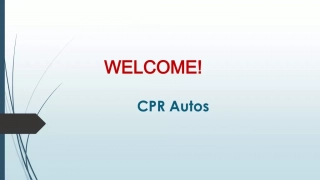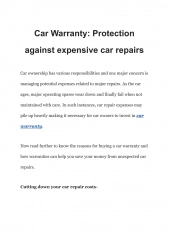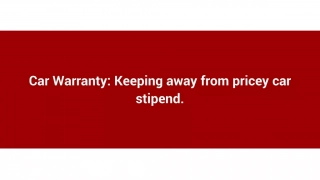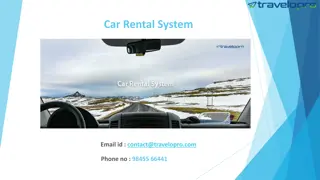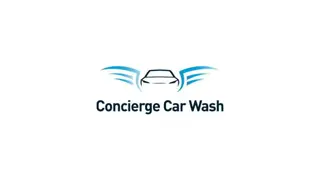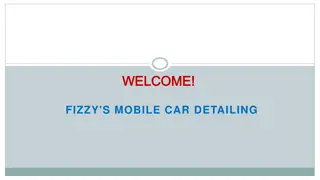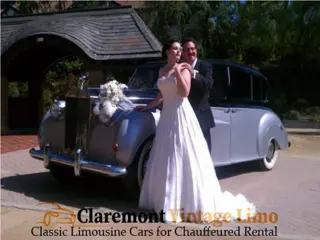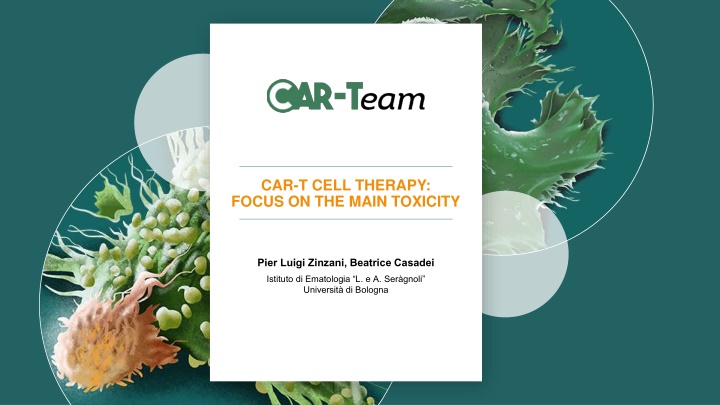
CAR-T Cell Therapy Toxicity and Treatment Strategies
Explore the main toxicities of CAR-T cell therapy, including immune-mediated effects like cytokine release syndrome and neurotoxicity, with a focus on current and future treatment approaches to mitigate adverse events. Learn about approved CAR-T therapies targeting CD-19, their indications, response rates, and clinical outcomes based on trials. Gain insights into immune-mediated toxicities such as CRS and the impact on patient outcomes.
Download Presentation

Please find below an Image/Link to download the presentation.
The content on the website is provided AS IS for your information and personal use only. It may not be sold, licensed, or shared on other websites without obtaining consent from the author. If you encounter any issues during the download, it is possible that the publisher has removed the file from their server.
You are allowed to download the files provided on this website for personal or commercial use, subject to the condition that they are used lawfully. All files are the property of their respective owners.
The content on the website is provided AS IS for your information and personal use only. It may not be sold, licensed, or shared on other websites without obtaining consent from the author.
E N D
Presentation Transcript
CAR-T CELL THERAPY: FOCUS ON THE MAIN TOXICITY Pier Luigi Zinzani, Beatrice Casadei Istituto di Ematologia L. e A. Sera gnoli Universita di Bologna
Timeline 1. Introduction 2. Main toxicity: Immune mediated toxicities Cytokine release syndrome (CRS) Immune effector cell-associated neurotoxicity syndrome (ICANS) Cytopenia and hypogammaglobulinemia 3. Conclusion: Future strategies to decrease adverse events related with CAR-T cell therapy
CD-19 targeting CAR-T cell Tisagenlecleucel (Novartis): Approved by AIFA on August 7th, 2019 Patients up to 25 years of age with B-cell acute lymphoblastic leukaemia (ALL), that is refractory or in second or later relapse (ELIANA trial) Adult patients with large B-cell lymphoma relapsed/refractory after 2 or more line of systemic therapy, including diffuse large B-cell lymphoma (DLBCL) NOS, high grade B-cell lymphoma, and DLBCL arising from follicular lymphoma (JULIET trial). 1. VH VL Axicabtagene ciloleucel (Kite-Gilead): Approved by AIFA on November 13th, 2019 Adult patients with large B-cell lymphoma relapsed/refractory after 2 or more line of systemic therapy, including DLBCL NOS, high grade B-cell lymphoma, primary mediastinal large B-cell lymphoma and DLBCL arising from follicular lymphoma (ZUMA-1 trial). 2. CD28 or 4-1 BB CD3 ZAP 70 Early clinical data in follicular lymphoma, multiple myeloma and other malignant disease like glioblastoma are promising and new approvals are expected in the coming years. 2nd generation (dual signaling)
Introduction Response rate ZUMA-1, OS JULIET, OS SCHOLAR-1, OS Median (mo) 7.1 6.1 6.2 Events/N Median OS (95% CI), months NR (12.8 NR) Primary refractory Refractory to second-line or later-line Relapsed 12 mo post-ASCT 143/179 261/306 101/118 Probability of Survival Event-free Probability OS (%) OS Rate 12-mo 18-mo 24-mo Overall 60% 53% 51% Patients with complete response All patients Months since infusion Months from commencement of salvage therapy Time (months) Prodotto CAR-T Costrutto CAR Indicazioni ORR CR Median DoR Median PFS Median OS DLBCL R/R LAL-B R/R (< 25 aa) CD19scFv/ 4-1BB/CD3 Tisagenlecleucel (JULIET study) 52% 40% NR 4 mo 12 mo CD19scFv/ CD28/CD3 DLBCL R/R PMBCL R/R Axicabtagene ciloleucel (ZUMA-1 study) 74% 54% NR 5.9 mo NR Mod. da Schuster SJ, et al. NEJM 2019; 380: 45-56; Locke FL, et al. Lancet Oncol 2019; 20: 31-42; Crump M, et al. Blood 2017; 130: 1800-1808
Immune mediated toxicities - CRS Cytokine release syndrome (CRS): immune-mediated toxicity characterized by an excessive immune reaction caused by immune-modulating drugs. ZUMA-1 AE, n (%) 2-year analysis (N: 108) JULIET AE, n (%) 2-year analysis (N: 111) 106 (98%) 64 (58%) Grade > 3 AEs Grade > 3 AEs 52 (48%) 46 (41%) Grade > 3 SAEs Grade > 3 SAEs 94 (93%) 64 (58 %) Any grade CRS Any grade CRS 12 (11%) 24 (22%) Grade > 3 CRS* Grade > 3 CRS* Median time to onset: 2 days (1-12) Median time to resolution: 7 days (2-29) Median time to onset: 3 days (1-9) Median time to resolution: 7 days (2-30) * grading by Lee et al. 2014 * grading by Porter et al. (UPenn) Mod. da Schuster SJ, et al. NEJM 2019; 380: 45-56; Locke FL, et al. Lancet Oncol 2019; 20: 31-42
CRS - Pathophysiology Lysed lymphocyte Activated T-cell Activated T-cell CAR CAR-T cell B CD-19 cell T CD-19 Activated T cells, lysed B lymphocytes: IFN- , TNF- Macrophages: IL-6, TNF- , IL-10, IL-1 Endothelial cells: Ang-2, vWF, IL-6 cell CD-3 IFN- , TNF- IL-6, MCP-1 GM-CSF Macrophage Dentritic cell Macrophage Early increase of IL-6 and angiopoietin2: angiopoietin1 ratio are associated with very severe CRS. IFN- , TNF- IL-8 Macrophage T cell IL-6 has been implicated in key pathogenetic aspects of CRS like vascular leakage, CID, cardiomyopathy. IL-6, Ang-2 vWF Endothelial cells Lymphocyte derived factors IFN- , TNF- Non lymphocyte derived factors IL-6, GM-CSF, IL-1, IL-8, IL-10, TNF- , MCP-1 (CCL2), Ang-2, vWF Mod. da Borrega JC. et al. Hemasphere 2019; 3: e191; Norelli M et al, Nat Med 2018; 24: 739-748; Faramand R, et al. Blood 2019; 132 (suppl_1): 95; Hunter CA, et al. Nat Immunol 2015; 16: 448-457
CRS Clinical presentation Blood test Rash Headache Hypotension Prolonged cytopenias Nausea Vomiting Coagulopathy Tachycardia Dyspnea Electrolyte Myalgia Arthralgias Fatigue Acute renal injury Hypoxia Transaminitis C-reactive protein Shock MOF CRS Fever Ferritin elevations Differential diagnosis: Sepsis: Severe CRS is associated with higher risk for infections (immune paralysis during CRS?) Hemophagocytic lymphohistiocytosis/macrophage activation syndrome TLS (can concur with CRS) Mod. da Grupp SA, et al. NEJM 2013; 368: 1509-1518; Lee DW, et al. BBMT 2019; 25: 625-638
CRS grading and management temperature > 38 C flu-like symptoms nausea infectious workup broad spectrum antibiotic supportive measures (antipyretics) CRS grade 1 temperature > 38 C hypotension not requiring vasopressors hypoxia requiring low-flow nasal cannula or blow-by manage fever and symptoms as grade 1 transfer to IMC/ICU low dose vasopressor tocilizumab 8 mg/kg i.v. CRS grade 2 temperature > 38 C hypotension requiring one vasopressor with or without vasopressin hypoxia requiring high-flow face mask manage fever and symptoms as grade 2 repeat tocilizumab low dose corticosteroids CRS grade 3 temperature > 38 C hypoxia requiring positive airway pressure hypotension requiring multiple vasopressors (excl. vasopressin) manage fever and symptoms as grade 2 high dose corticosteroids consider further individual treatment CRS grade 4 The severity of CRS seems to be the only factor associated with infection. Patients with severe CRS present prolonged cytopenia and develop more frequent invasive mold infections. Mod. da Lee DW, et al. BBMT 2019; 25: 625-638
Immune mediated toxicities - ICANS Immune effector cell-associated neurotoxicitity syndrome (ICANS) ZUMA-1 AE, n (%) 2-year analysis (N: 108) JULIET AE, n (%) 2-year analysis (N: 111) 106 (98%) 64 (58%) Grade > 3 AEs Grade > 3 AEs 52 (48%) 46 (41%) Grade > 3 SAEs Grade > 3 SAEs 65 (64%) 23 (21%) Any grade NEs Any grade NEs 35 (32%) 13 (12%) Grade > 3 NEs** Grade > 3 NEs** Median time to onset: 5 days (1-17) Median time to resolution: 13 days (1-191) Median time to onset: 6 days (1-17) Median time to resolution: 14 days ** grading by CTCAE ver 4.03 ** grading by CTCAE ver 4.03 10% of patients experience CNS toxicity in the absence of CRS. In the other 90% of patients CNS toxicity appears concurrent with CRS or following its resolution. Mod. da Schuster SJ, et al. NEJM 2019; 380: 45-56; Locke FL, et al. Lancet Oncol 2019; 20: 31-42
ICANS - Pathophysiology CAR-T cells, lysed B cells: IFN- , TNF- Macrophages: IL-6, TNF- , IL-10, IL-1 Endothelial cells : Ang-2, vWF, IL-6 Disruption of BBB Microglia activation Intrathecal cytokines induce an inflammatory state and brain damage Mod. da Ya ez L, et al. Hemasphere 2019; 3: e186; Gust J, et al. Cancer Discov 2017; 7: 1404-1419; Santomasso BD, et al. Cancer Discov 2018; 8: 958-971
ICANS Clinical presentation Alteration in mental status Risk factor for a severe ICANS: Impaired speech (aphasia) Seizure Severe CRS/systemic inflammation Tumour burden prior to CAR-T cell infusion Movement disorder (Tremor) Encephalopathy Higher CAR-T cell doses Higher CAR-T cell peak expansion values Cerebral edema Coma ICANS Headache Neurological comorbidities. Mod. da Lee DW, et al. BBMT 2019; 25: 625-638
ICANS grading and management supportive care IV hydration neurology consultation EEG/MRI consider antiepileptic drug awakens spontaneously fatigue ICE: 7-9 points ICANS grade 1 supportive care as grade 1 consider ICU transfer consider antiepileptic drug, if not started low dose corticosteroids (i.e. dexamethasone 10 mg) awakens to voice delirius/somnolent ICE: 3-6 points ICANS grade 2 supportive care as grade 2 ICU trasfer continous corticosteroids (i.e. dexamethasone 10 mg every 6 hours) and antiepileptic drugs repeat MRI awakens to tactile stimulus ICE: 0-2 points local edema on imaging seizure, that resolves with intervention ICANS grade 3 comatose ICE: 0 cerebral edema life-threatening (>5min) seizure motor weakness supportive care as grade 3 high dose corticosteroids specific neurointensive treatment (status epilecticus, brain edema) consider further individual treatment ICANS grade 4 Mod. da Lee DW, et al. BBMT 2019; 25: 625-638
SCORE ICE: Immune Effector Cell-associated Encefaphalopathy Punteggio Chiedere al paziente anno, mese, citt e ospedale (totale 4 punti) Orientamento Chiedere al paziente di nominare 3 oggetti (es. penna, orologio bottone) (massimo 3 punti) Denominazione Chiedere al paziente di eseguire compliti semplici (es. mostrare due dite o chiudere gli occhi ) (massimo 1 punto) Compiti semplici su comando Chiedere al paziente di scrivere una frase semplice (massimo 1 punto) Scrittura Chiedere al paziente di contare all indietro (es. partendo da 100 ) (massimo 1 punto) Attenzione Totale /10
ICANS + CRS - Management Grado Terapia di supporto Tocilizumab Steroidi Follow-up CRS grado 1 Stretta osservazione (vedi rispettive tabelle) Standard of care NO NO + ICANS grado 1 Se migliora fino a tornare ICANS grado 1: tapering dello steroide in 3-4 giorni Se non migliora: prosegui steroide e supporto intensivo + ICANS grado >2 Si ( il grado ICANS che guida la gestione della tossicit ) Trasferimento in ICU NO Desametasone 10 mg ev x 4 volte/die CRS grado > 2 Trasferimento in ICU se CRS grado 3-4, considera se grado 2 Si tratta solo la CRS a seconda del grading (vedi tabella sulla gestione della CRS) + ICANS grado 1 Trasferimento in ICU + ICANS grado 2 Si tratta la CRS come da tabella 2 ma si inizia sempre metilprednisolone 1 mg/kg x 2 volte/die, anche se CRS grado 2 Trasferimento in ICU + ICANS grado 3 Trasferimento in ICU + ICANS grado 4
Cytopenia and hypogammaglobulinemia Cytopenia: Most common AE of grade >3 Related to conditioning regimen, cytokine released during CRS, exposure to multiple prior chemotherapy treatment. Neutropenia is the most common cytopenia 78% of patients in ZUMA-1 and 64% patients in JULIET trial developed PMN <1000/mm3 GCSF is not recommended during the first 3 weeks after CAR-T cell infusion or until CRS has resolved Severe thrombocytopenia was seen in 38% of patients in ZUMA-1 and 11% of patients in JULIET trial Hypogammaglobulinemia: Secondary to the persistence of CAR-T and subsequent development of B-cell aplasia Incidence: 15% of patients with DLBCL IgG levels usually fall 1 to 3 months after CAR-T infusion The presence of hypogamma is associated with the achievement of a complete response Replacement treatment is reserved to those patients with severe or recurrent infections
Conclusion - Strategies to mitigate toxicities Risk adapted therapy Cytokine release prophylaxis Prevention of CRS and neurotoxicity PREVENTION Selective antigens ( and light chain) Deleting the target antigen on normal HSC Optimizing the CAR (dual and affinity-tuned CAR) Clinical features (fever 38.9 C) Prevention of on-target/off tumor effect PROMPT RECOGNITION Serum biomarkers (IL-6, IFN- , IL-13, MIP1 , MCP-1..) Suicide genes Destruction of the CAR-T cell by mAb Switch on/off CAR SWITCH ON/OFF Diminishing the activity of the CAR Risk of CRS and ICANS is mainly related to: disease burden, CAR-T cell construct and dose infused, recipient factors
Conclusion CAR-T cell team HEMATOLOGIST CELLULAR PROCESSING LAB DATA MANAGER PATIENT RADIOLOGIST CARDIOLOGIST APHERESIS UNIT INTENSIVE CARE UNIT PHARMACIST NEUROLOGIST



